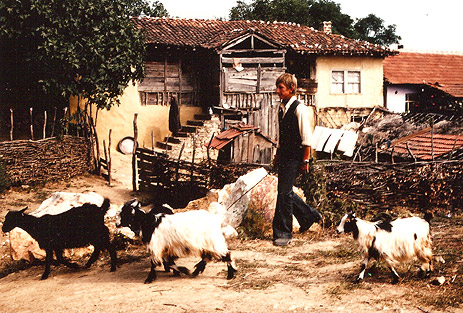Image Resource Bank
Image Gallery |  5 of 15
5 of 15 
Shepherd in a Muhacir (immigrant) Village, Bursa, Turkey
The Ottoman Empire lost most of its Balkan territories in the late nineteenth century, initiating a flow of Muslims and Turkish-speaking populations towards Istanbul and Anatolia that was to continue well into the twentieth century. In 1923 the so-called population exchanges‚ between the modern Turkish Republic and Greece, involved the movement of up to half a million Turks and Muslims eastward and over a million Greek Christians westward. The ethnic homogeneity this produced was undoubtedly seen as a benefit by Greek and Turkish states, but equally undoubtedly involved massive suffering, still remembered intensely on both sides. This is a muhacir village near Bursa, in western Turkey. Most people living here now were originally from today’s Bulgaria. The picture was taken in the early 1980s, when young men, such as this shepherd, could still speak a bit of Bulgarian, and where women still dressed conservatively, compared to their non-muhacir neighbors (notice the black-clad woman in the background).
Name: Shepherd in a Muhacir (immigrant) Village, Bursa, Turkey
Material: Unknown
Size: 1004 x 678 pixels
Date: ca 1980s
Place of Origin: Bursa, Turkey
Location: Collection of Martin Stokes
Source and Registration#: Collection of Martin Stokes

 Martin Stokes
Martin Stokes
Fellow of St. John’s College, Oxford University




